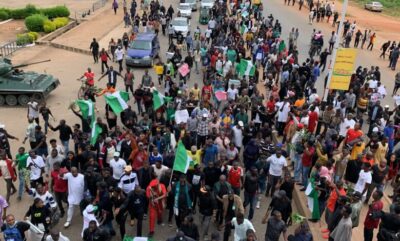Memories are an anchoring point. As a Native studies scholar of Apache descent, I understand memory as a lifeline to my ancestors. To who I am in the world. They link Native peoples to the events that shaped their social and political life, such as the forced removal of tens of thousands of Cherokee, Choctaw, Creek, Seminole, and Chickasaw peoples between 1830 and 1850 known as the Trail of Tears; the five thousand mile march from their seized lands in what are now known as Georgia, Alabama, North Carolina, Florida, and Tennessee to “Indian territory,” (Oklahoma), which would see the death of thousands. Memory connects Indigenous peoples to what remains of their lifeways since such events—ways of being, ceremonial knowledge, and social protocols—amidst what does not: a coherent social body and political autonomy.
Memory in this sense is akin to Émile Durkheim’s collective consciousness when it persists over time and becomes collective memory. But while Durkheim theorized the collective consciousness as static sets of values and beliefs associated with “primitive” societies, collective memory is demarcated through living, breathing experiences of the world. Individual and collective experiences are valued in an Indigenous context as the primary means for knowledge production. When you read the dynamic rhythms of the natural world over time, and thus come to personally know its sentience, the shared experience of being coextensive with all others, human and other-than-human, becomes the baseline for belief. Shared values arise out of this experience of being in the world and an understanding that in order to live a good, even moral life, you must honor all these relationships. There is no uncritical internalization of shared dogma here. These collective experiences are distilled in stories that are corroborated over time. And so, an Indigenous worldview that understands the land and the greater world as a living breathing organism that includes human life but exists beyond it is not a theory. It is a reality confirmed through Native experiences of the land, its power and spirit. This knowledge lives on as collective memory among the people, as the social facts that tell them who they are.
From a Native perspective, memory implies connection to those that came before you, their joy and spirit. To those that survived so that you could live. To those that did not. It also connects you to their terror. The terror of invasion. The terror of fleeing across deserts. Of being hunted. Of bounties on your head. Running. Running. Running. In order to survive.
Memory from this perspective also implies distance. The distance that comes with forced removal. With peoples scattered across borders of what are now states and countries. It is the memory of this rupture that becomes trauma. The kind of trauma that imprints itself epigenetically on the body and remains acute over generations. Memories that are inherited, their affects compounding over time. As more settlers come. The more distance between you and your own history. Between you and your ability to story your lands.
These memories weigh upon those of us who have Native ancestors. You can feel that distance. In your body. It is a void. A void that is present in the memory and characterizes your connection. Its density is a thread running through your peoples. Through family stories, photos, expressions, and gestures. And linking you to those whose names you will never know.
Memory is also ancestral. Indigenous religious lifeways persist because of the memories and experiences of those who came before you. As a living lineage of belief, it is akin to what Danièle Hervieu-Léger describes as a chain of memory. Again, in a Native context, religious beliefs are grounded in experience, generally because they are revelation-based, meaning that religious knowledge from the spirit world presents itself to peoples through sacred places over time. Here, collective memory acts as a storehouse of these experiences with particular places/powers that remain quite present. Immanent. In this way, collective memory is a chain, a hermeneutic linking those in the present to the experiences of one’s ancestors. Those that knew prayers and songs. Knew the properties and medicinal use of plants. Knew the inner workings of agricultural cycles. The motion of the stars and ceremonial life. Ancestral stories hold these chains in coils. When they are retold, they enable ancestors to be present. To speak. You are linked through the storying of these memories, which allow one to interpret the greater world and your place within it.
Ancestral memory is also a sensibility. The lifeways that just feel right in your body, such as the ways you tend to your plants or the deferential tone you take with your elders. Maybe because these ethics or lifeways were practiced and modeled by your parents, or grandparents. Or because our cells record trauma, but also ways of being. They are the tacit things that make up the deepest parts of who we are as Native-descendant. Our values. Our sense of family. Our ways of caring for others. Our sense of purpose. The ways we are connected that transcend speech. Through our bodies, features, fears, but also our hearts, courage, fortitude. Our relationship to the land. The recognition of its voice.
In this way, memory can reconstitute peoples. Those whose histories have been erased, so we can re-member who we are. Re-member our power. Re-member our beauty. And be restored to our full humanity. The revitalization of ceremonial life, in particular, is a potent means for the restoration of persons, but also for healing internalized shame and racism. In short, the decolonial work of unraveling the lies that had broken our spirits—what Mohawk scholar, Taiaiake Alfred, calls regeneration.
Memories live on in persons, but also, the land. These memories can be called upon by those in the present to better lead and protect the people. But sometimes they lead and protect themselves. Because they have been thrown. Scattered. Below one border, above another. And the memories are trying to re-orient themselves back to the center. To learn the language of peoples that doesn’t exist in words, but in experience of the immaterial. In our ability to read the land, even if we no longer know its stories. To let the land work upon our mind anyway. And know in our bodies why it is sacred.
* * *
Memory is what enables a people anywhere to remain a people. To understand the world and their place in it in a particular way. To understand what tethers them together with the same heart. To re-member themselves and one another when these tethers are ruptured. Memory is the metaphysical net that supports not only survivance but also the future of their peoplehood.














Thank you Natalie Avalos. I find this very moving, especially in the moment when many people of settler-colonial descent (like myself) are awakening to the full horror of the nightmare of the history we were taught was benign–and our need to reconstruct true memory.